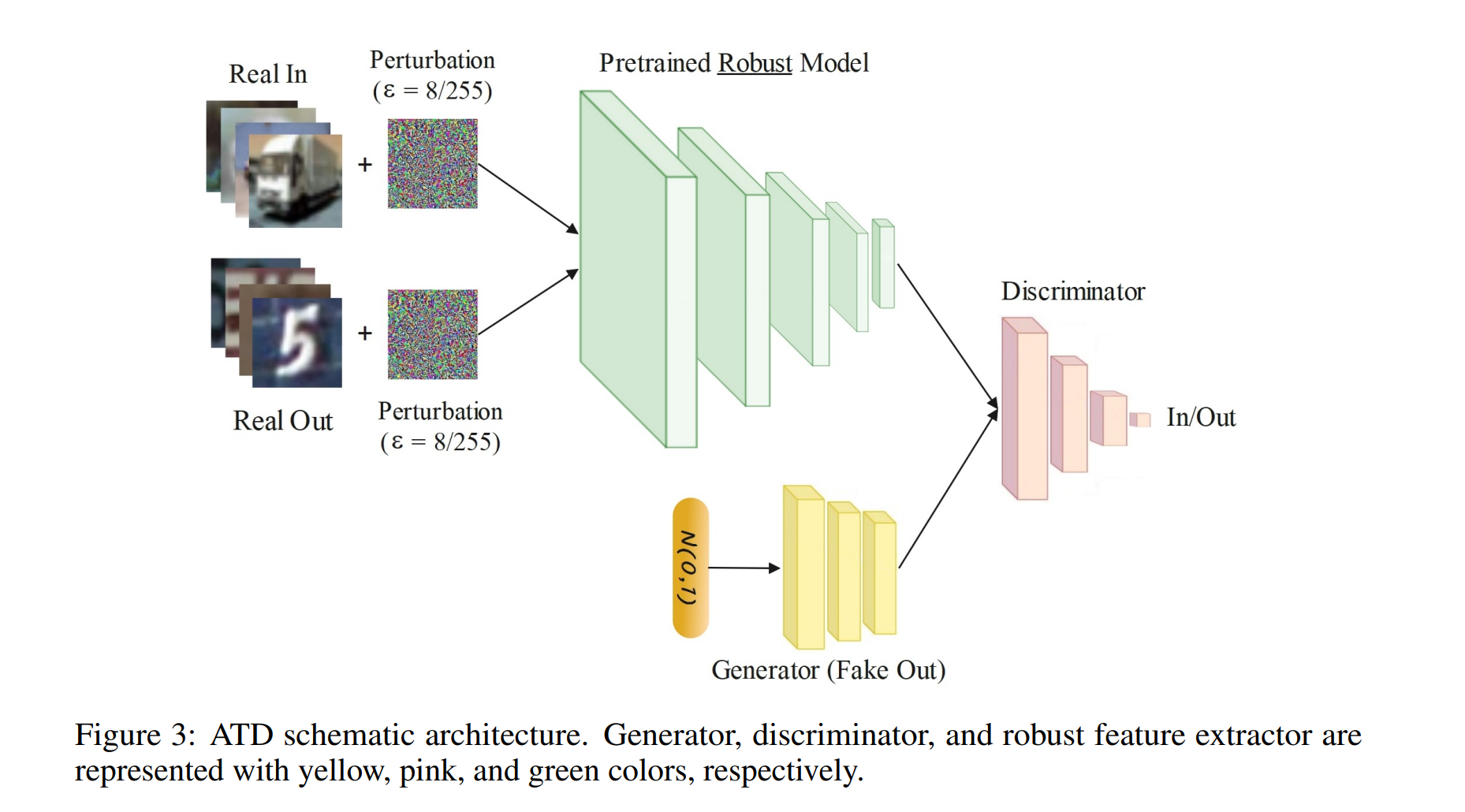Your Out-of-Distribution Detection Method is Not Robust!
Out-of-distribution (OOD) detection has recently gained substantial attention due to the importance of identifying out-of-domain samples in reliability and safety. Although OOD detection methods have advanced by a great deal, they are still susceptible to adversarial examples, which is a violation of their purpose. To mitigate this issue, several defenses have recently been proposed. Nevertheless, these efforts remained ineffective, as their evaluations are based on either small perturbation sizes, or weak attacks. In this work, we re-examine these defenses against an end-to-end PGD attack on in/out data with larger perturbation sizes, e.g. up to commonly used $\epsilon=8/255$ for the CIFAR-10 dataset. Surprisingly, almost all of these defenses perform worse than a random detection under the adversarial setting. Next, we aim to provide a robust OOD detection method. In an ideal defense, the training should expose the model to almost all possible adversarial perturbations, which can be achieved through adversarial training. That is, such training perturbations should based on both in- and out-of-distribution samples. Therefore, unlike OOD detection in the standard setting, access to OOD, as well as in-distribution, samples sounds necessary in the adversarial training setup. These tips lead us to adopt generative OOD detection methods, such as OpenGAN, as a baseline. We subsequently propose the Adversarially Trained Discriminator (ATD), which utilizes a pre-trained robust model to extract robust features, and a generator model to create OOD samples. Using ATD with CIFAR-10 and CIFAR-100 as the in-distribution data, we could significantly outperform all previous methods in the robust AUROC while maintaining high standard AUROC and classification accuracy. The code repository is available at https://github.com/rohban-lab/ATD .
PDF Abstract


 CIFAR-10
CIFAR-10
 CIFAR-100
CIFAR-100
 Places
Places